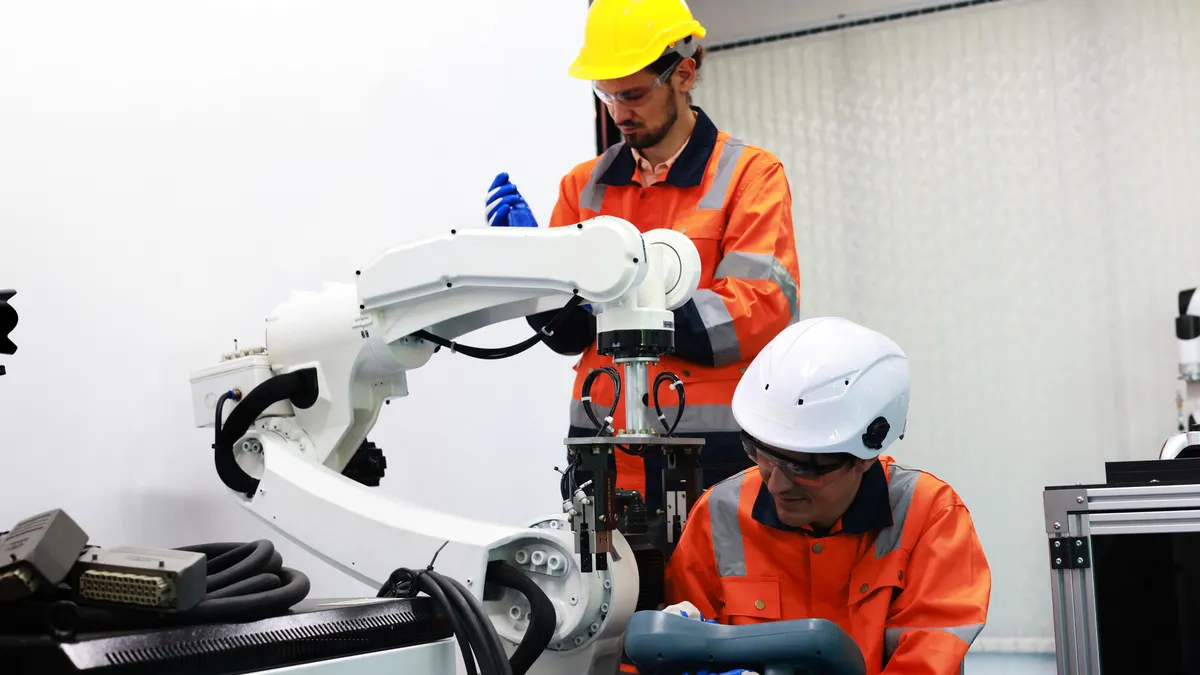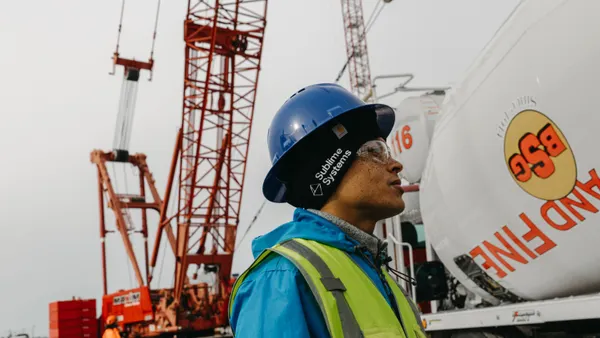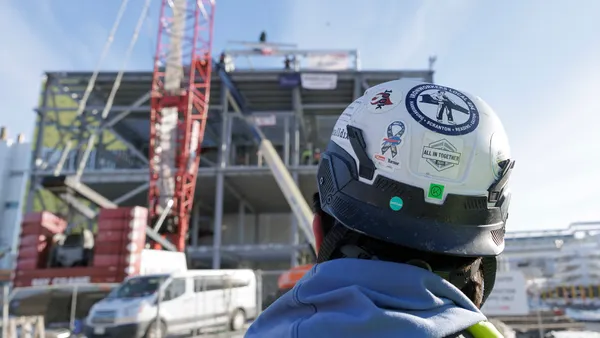Dive Brief:
- Humanoid robots might not be a fixture on the jobsites of today, but the time is now for builders to start gameplanning for their future usage, according to an Oct. 17 report from consulting firm McKinsey and Co.
- The report paints a scenario that contractors across the country are all too familiar with: Fewer young people entering the field, skilled workers retiring and a physically demanding environment have created a skilled labor crisis in the industry. The consulting firm also pointed to dismal gains in productivity over the last two decades, far below manufacturing and the overall economy.
- In response, McKinsey claims, humanoid robots might be the answer. With the advent of embodied artificial intelligence, better physical component technology and increasingly sophisticated AI models, these robots represent what McKinsey calls a “potentially transformative solution” for the industry’s productivity crisis.
Dive Insight:
To start, contractors should begin to figure out where humanoid robots could fill in the gaps and aid their businesses the most, either by closing productivity gaps, reducing hazardous risks and supporting large-scale infrastructure construction, per the report.
Current deployments focus on repetitive, moderately complex tasks in low-variability environments such as mapped grocery aisles or staged interiors with identical layouts, according to McKinsey. But future applications could include pipe installation in tight spaces, sensor installation or earthwork.
The next step is then determining, as a builder, how fast to move toward adoption.
Doing so could help position the company as:
- A first mover that pilots projects in collaboration with original equipment manufacturers.
- An early adopter that scales proven models rapidly.
- A selective deployer that concentrates on implementing use cases with high return on investment.
Each type has its own benefits — a first mover could be seen as a trailblazer and attract talent, but could incur risks on the ROI front. By contrast, selective deployers face the lowest risk but gamble potentially falling behind peers.
“With the industry’s long-standing labor and productivity challenges likely to intensify, construction leaders would do well to begin considering potential uses for humanoids now,” the report reads. “If humanoids do become a cost-effective solution, companies will want to move as fast as possible. Those who prepare now will be best positioned to seize the opportunities ahead.”
Robots in the construction industry are not a totally new phenomenon. For example, Watsonville, California-based Granite Construction uses supervised autonomous machinery on its jobsites to upskill its heavy machinery operators. Thus far, contractors have used Boston Dynamics’ Spot the Dog to take photos and track jobsite progress, Dusty Robotics’ layout machine to perform layout work six times faster than without the tech and Canvas’ drywall finishing robot.
Contractors are also more receptive to their own companies’ forays into robotics. Positive evaluations of the tech rose from 74% in 2024 to over 95% in 2025, according to the Equipment & Robotics Benchmarking report from Chicago-based BuiltWorlds. However, the number of firms reporting active robotics use fell from 65% last year to 46% now.














